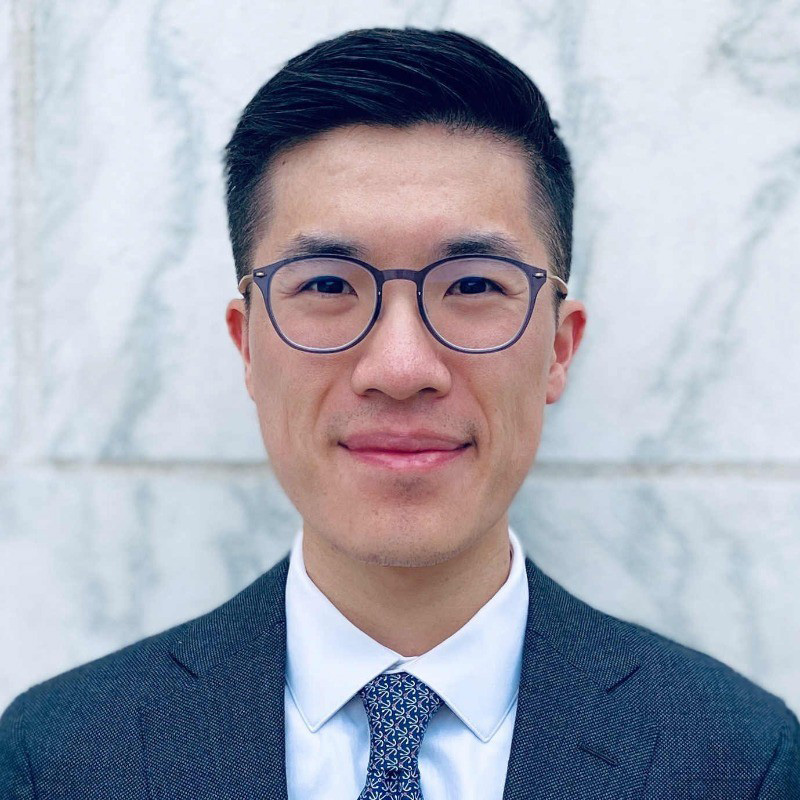While everyone celebrates the same number of birthdays each year, the reality is that some 40-year-olds have the vitality of someone in their 20s, while others seem decades older than their chronological age suggests. This puzzling discrepancy has long mystified both scientists and the general public.
The traditional approach of simply counting years since birth fails to capture the true story of how our bodies are aging. This oversimplification has led to missed opportunities for early intervention, inadequate health assessments, and a fundamental misunderstanding of the aging process itself. In fact, there are two ages to consider: chronological age, which is the number of years since birth, and biological age, which reflects the functional and cellular state of the body. These two ages can differ significantly, highlighting the importance of looking beyond just the calendar.
As someone who has seen the impacts of an aging patient population during my time at Harvard, I’ve witnessed firsthand how biological age measurements have transformed our understanding of aging. The emerging science reveals that aging isn’t just about time passing—it’s about information loss, cellular dysfunction, and molecular changes that we can now measure and potentially manipulate.
Key Takeaways
- Biological age measures how well your body functions compared to others of the same chronological age, reflecting true cellular health rather than time elapsed
- Ten distinct molecular and cellular mechanisms drive biological aging, from DNA damage to cellular senescence
- Revolutionary new research shows that biological age can be slowed through chemical and genetic interventions that restore youthful cellular function
- Understanding your biological age provides actionable insights for personalized health optimization and longevity strategies
What is Biological Age? A Complete Overview
Biological age represents the true functional age of your body at the cellular and molecular level, independent of how many years you’ve been alive. Unlike chronological age, which simply counts time, biological age reflects the accumulated damage, dysfunction, and deterioration that occurs in our cells and tissues over time. Health factors like diet, exercise, and sleep contribute to a person’s biological age.
Think of it this way: if chronological age is like the odometer in your car showing total miles driven, biological age is like a comprehensive diagnostic that reveals the actual condition of your engine, transmission, brakes, and all other systems. Two cars with identical mileage can have vastly different mechanical conditions—just as two people of the same chronological age can have dramatically different biological ages. Each factor, such as genetics or lifestyle, can influence biological age. Biological age is affected by both intrinsic and extrinsic factors. People age at different rates due to the interplay of these factors. A person’s biological age is determined by analyzing a combination of biomarkers and health indicators.
The concept emerged from decades of research showing that aging occurs at vastly different rates between individuals. Some people maintain remarkable health and vitality well into their 80s and 90s, while others experience significant decline much earlier. This variation isn’t random—it reflects measurable differences in cellular and molecular function that we can now quantify. Many factors—including genetics, lifestyle, and environment—affect how people age. Other health factors, such as diet and exercise, also play a significant role in determining biological age.
Modern biological age measurements rely on various biomarkers, including:
- DNA methylation patterns (epigenetic clocks)
- Telomere length
- Inflammatory markers
- Metabolic function indicators
- Cellular senescence markers
- Transcriptomic profiles (gene expression patterns)
While these markers are important, no single biomarker provides an accurate measure of biological age due to the influence of external factors. Laboratory tests and biomarker analysis are frequently used to calculate biological age. For example, DNA methylation patterns and epigenetic clocks are valuable because these molecular signatures, combined with machine learning, are used to predict biological age.
The Ten Hallmarks of Aging: Core Mechanisms of Biological Age
Scientists have identified ten distinct hallmarks of aging that work together to determine your biological age. Both genetic factors and environmental factors play crucial roles in influencing these mechanisms and, consequently, your biological age. These mechanisms are organized into three categories based on their level of action:
Molecular Level Hallmarks (Primary Drivers)
1. Genomic Instability: When Our DNA Breaks Down
Our DNA serves as the master blueprint for cellular function, but it’s constantly under attack from environmental toxins, metabolic byproducts, and simple wear-and-tear. Genomic instability represents the accumulation of DNA damage over time, leading to mutations, chromosomal abnormalities, and cellular dysfunction. Shorter telomeres are a hallmark of genomic instability and are associated with increased cellular aging, DNA damage, and a higher risk of age-related diseases.
Research has identified several key aspects:
- Nuclear DNA damage accumulation, including dangerous double-strand breaks
- Mitochondrial DNA (mtDNA) mutations, which are particularly harmful due to mitochondria’s role as cellular powerhouses
- Nuclear architecture alterations, affecting how genetic information is organized and accessed
Studies using single-cell RNA sequencing of over 350,000 cells across different age groups have confirmed that genomic mutations increase proportionally with age across all organs.
2. Telomere Dysfunction: The Cellular Aging Clock
Telomeres are protective DNA-protein structures at the ends of chromosomes that shorten with each cell division. As cells divide repeatedly over time, telomeres become progressively shorter, contributing to cellular aging. When telomeres become critically short, cells enter senescence or die. Telomere dysfunction triggers DNA damage responses and inflammatory cascades that accelerate aging throughout the body.
Key findings include:
- Telomere length inversely correlates with chronological age
- Short telomeres are associated with increased risk of age-related diseases
- Telomerase activation can extend cellular lifespan but raises cancer concerns
3. Epigenetic Alterations: The Software of Aging
While our genetic code remains largely stable throughout life, the epigenetic information—the instructions that tell genes when and how strongly to be expressed—changes dramatically with age. This represents one of the most significant discoveries in aging research.
Key epigenetic changes include:
- DNA methylation drift, where chemical tags on DNA gradually shift over time
- Histone modifications, altering how DNA is packaged and accessed
- Chromatin remodeling, changing the three-dimensional structure of genetic material
Recently, artificial intelligence and machine learning are increasingly used to analyze epigenetic data, enhancing the accuracy of biological age predictions and advancing the development of aging clocks.
The revolutionary Information Theory of Aging proposes that this loss of epigenetic information is a primary driver of aging, triggering cascades of cellular dysfunction.
4. Loss of Proteostasis: When Protein Quality Control Fails
Proteostasis refers to the cellular mechanisms that maintain proper protein folding, function, and disposal. With age, these quality control systems become overwhelmed, leading to the accumulation of misfolded and damaged proteins.
This breakdown involves:
- Impaired protein folding and repair systems
- Overwhelmed cellular cleanup mechanisms (proteasomes and lysosomes)
- Accumulation of protein aggregates linked to neurodegenerative diseases
5. Compromise of Autophagy: Impaired Cellular Cleanup
Autophagy is the cellular process that breaks down and recycles damaged components, including organelles and protein aggregates. This crucial maintenance system becomes less efficient with age, allowing cellular debris to accumulate.
Age-related autophagy decline leads to:
- Accumulation of damaged mitochondria
- Increased oxidative stress
- Enhanced cellular senescence
- Reduced cellular energy production
6. Mitochondrial Dysfunction: When Cellular Power Plants Fail
Mitochondria, often called the “powerhouses of the cell,” become increasingly dysfunctional with age. This mitochondrial dysfunction affects virtually every aspect of cellular function and represents a major component of biological age.
Key aspects include:
- Decreased energy (ATP) production
- Increased reactive oxygen species (ROS) generation
- Impaired quality control mechanisms (mitophagy)
- Reduced mitochondrial biogenesis
Cellular Level Hallmarks (Antagonistic Effects)
7. Cellular Senescence: When Cells Stop Dividing but Won’t Die
Cellular senescence represents one of the most important mechanisms underlying biological age. Senescent cells stop dividing but remain metabolically active, secreting inflammatory compounds in what’s called the senescence-associated secretory phenotype (SASP).
These “zombie cells” accumulate with age and contribute to:
- Chronic inflammation throughout the body
- Tissue dysfunction and reduced regenerative capacity
- Increased risk of age-related diseases
- Accelerated aging in surrounding healthy cells
8. Stem Cell Exhaustion: The Decline of Regenerative Capacity
Our bodies maintain populations of stem cells that can differentiate into various cell types to repair and replace damaged tissues. However, these crucial cells become exhausted and dysfunctional with age. The physical environment, including exposure to toxins and other external factors, can accelerate stem cell aging and reduce their regenerative capacity.
Stem cell dysfunction manifests as:
- Reduced proliferation capacity
- Impaired differentiation potential
- Altered cellular metabolism
- Increased susceptibility to senescence
9. Altered Intercellular Communication: Disrupted Cell Signaling
With age, the communication between cells becomes disrupted, leading to tissue dysfunction and systemic aging effects. This includes:
- Changes in hormone signaling
- Inflammatory signaling cascades
- Disrupted extracellular vesicle communication
- Altered immune system responses
Altered intercellular communication also impacts the central nervous system, contributing to age-related neurological changes.
Systemic Level Hallmarks (Integrative Effects)
10. Deregulated Nutrient Sensing: Metabolic Pathway Disruption
Age-related changes in key metabolic pathways affect how cells respond to nutrients and energy availability. The three major pathways involved are:
- Insulin/IGF-1 signaling: Becomes dysregulated, affecting growth and metabolism
- mTOR pathway: Overactivated with age, promoting growth at the expense of cellular maintenance
- AMPK pathway: Becomes less sensitive, reducing cellular energy efficiency
Diet plays a significant role in regulating these pathways and can influence biological age by affecting nutrient sensing and cellular health.
Revolutionary Breakthroughs in Biological Age Slowing
Genetic Reprogramming: Turning Back the Cellular Clock
One of the most exciting developments in aging research involves using Yamanaka factors—specific proteins that can reprogram adult cells back to a more youthful state. Research has shown that expressing three of these factors (OCT4, SOX2, and KLF4) can:
- Restore youthful DNA methylation patterns
- Reverse transcriptomic age by several years
- Improve cellular function and tissue health
- Extend lifespan in animal models
This approach, called partial reprogramming, appears to reset cells to a younger biological age without erasing their cellular identity—a crucial distinction that prevents uncontrolled cell growth and cancer.
Chemical Cocktails: Age Reversal Through Small Molecules
Groundbreaking new research has identified chemical cocktails that can slow biological age without genetic manipulation, including vitamins, minerals, and nutrients. Scientists have identified different small molecules that can:
- Restore youthful gene expression patterns in less than a week
- Reverse cellular senescence markers
- Improve nucleocytoplasmic compartmentalization (a key aging biomarker)
- Reduce transcriptomic age by several years
The most effective cocktail includes valproic acid, CHIR-99021, E-616452, tranylcypromine, and forskolin. These chemical approaches represent a potentially safer and more accessible alternative to genetic interventions.
Benefits: Why Understanding Biological Age Matters
Understanding biological age provides several crucial advantages for health optimization and longevity:
Personalized Health Assessment: Biological age offers a more accurate picture of your true health status than chronological age alone, enabling more targeted interventions. Understanding your biological age can also help identify your risk for health conditions and chronic conditions.
Early Disease Detection: Changes in biological age can serve as early warning signals for age-related diseases, allowing for preventive measures before symptoms appear. An older biological age is associated with increased risk of premature death and age-related diseases.
Treatment Monitoring: Biological age measurements can track the effectiveness of anti-aging interventions, exercise programs, dietary changes, and medical treatments. Tracking biological age can also help monitor the impact of lifestyle changes, such as managing stress and adopting healthy habits.
Longevity Optimization: By understanding which of the ten hallmarks are driving your personal aging process, you can focus on the most relevant interventions for your situation. Healthy living, including regular exercise and a balanced diet, can provide significant health benefits and improve overall health.
Clinical Applications: Healthcare providers can use biological age to make more informed decisions about treatment approaches, risk assessments, and preventive care strategies. They can also recommend lifestyle changes to reduce biological age and lower the risk of chronic conditions.
Summary: The Future of Aging Science
The science of biological age represents one of the most promising frontiers in medicine and longevity research. We now understand that aging isn’t an inevitable, uniform process but rather a complex interplay of ten distinct molecular mechanisms that can be measured, understood, and potentially manipulated.
Key insights from current research include:
- Aging occurs through ten specific, measurable hallmarks rather than simple wear-and-tear
- These hallmarks interact and amplify each other, creating cascading effects
- Biological age can be slowed or halted through both genetic and chemical interventions
- Early intervention based on biological age measurements may prevent age-related diseases
- The field is rapidly advancing toward clinical applications for humans
As we continue to unravel the mechanisms of biological age, we’re moving closer to a future where aging becomes a treatable condition rather than an inevitable fate. Advances in biological age research have the potential to increase life expectancy by targeting the underlying mechanisms of aging. The ultimate goal isn’t just to extend lifespan, but to extend healthspan—the number of years we live in good health and vitality.
Frequently Asked Questions
- How is biological age different from chronological age?
Chronological age simply counts the years since birth, while biological age measures how well your body functions at the cellular and molecular level based on the ten hallmarks of aging. For example, two people of the same chronological age can have significantly different biological ages based on their genetics, lifestyle, environment, and accumulated cellular damage.
- Can biological age actually be reversed?
Aging cannot be reversed but can be slowed. Recent breakthrough research has demonstrated that biological age can be slowed hrough various interventions. Studies using Yamanaka factors and chemical cocktails have shown reversal of aging biomarkers and restoration of youthful cellular function in laboratory settings, with promising early results in animal models. Interventions targeting a sedentary lifestyle, such as increasing physical activity, can also help slow biological aging.
- Which of the ten hallmarks of aging is most important?
All ten hallmarks interact and influence each other, but recent research suggests that epigenetic alterations and loss of information may be primary drivers that trigger many of the other hallmarks. These mechanisms are also linked to aging related diseases such as cardiovascular disease and neurodegeneration. However, the relative importance varies by individual and may change over time.
- How can I measure my biological age?
Several commercial tests are available that measure biological age through DNA methylation patterns (epigenetic clocks), telomere length analysis, and other biomarkers. Blood tests are commonly used to assess biomarkers such as DNA methylation and telomere length. However, the field is still evolving, and different tests may give varying results. Consult with a healthcare provider familiar with longevity medicine for the most appropriate testing options.
- When might biological age reversal treatments become available for humans?
While research is advancing rapidly, most biological age reversal treatments are still in experimental stages. Some interventions like senolytic drugs are in clinical trials, and certain lifestyle interventions can already slow biological aging. However, widespread clinical availability of comprehensive age reversal treatments is likely still several years away, pending safety and efficacy studies.
References
- Yang, Jae-Hyun, et al. “Chemically induced reprogramming to reverse cellular aging.” Aging (Albany NY) 15.13 (2023): 5966.
- Guo, Jun, et al. “Aging and aging-related diseases: from molecular mechanisms to interventions and treatments.” Signal transduction and targeted therapy 7.1 (2022): 391.
- López-Otín, C., et al. (2023). Hallmarks of aging: An expanding universe. Cell, 186(2), 243-278.
- Ocampo, A., et al. (2016). In vivo amelioration of age-associated hallmarks by partial reprogramming. Cell, 167(7), 1719-1733.
- Takahashi, K., et al. (2007). Induction of pluripotent stem cells from adult human fibroblasts by defined factors. cell, 131(5), 861-872.
- Horvath, S., et al. (2018). DNA methylation-based biomarkers and the epigenetic clock theory of ageing. Nature reviews genetics, 19(6), 371-384.
- Guan, J., et al. (2022). Chemical reprogramming of human somatic cells to pluripotent stem cells. Nature, 605(7909), 325-331.
- Rollandi, G. A., et al. (2019). Biological age versus chronological age in the prevention of age associated diseases. OBM Geriatrics, 3(2), 1-11.







